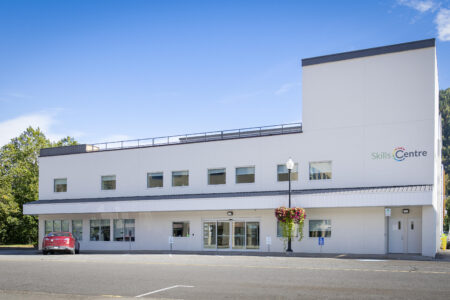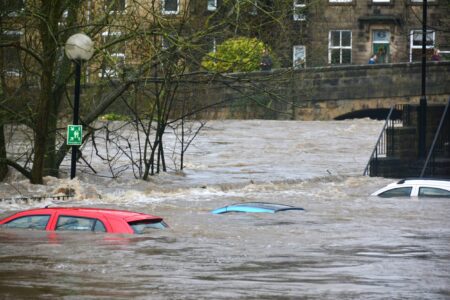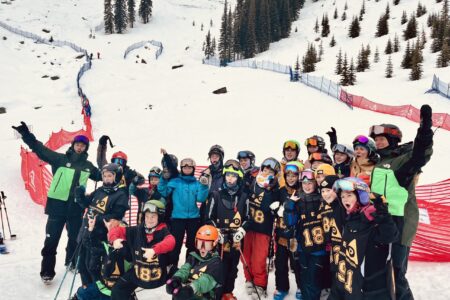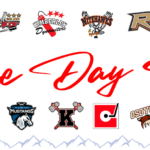The Local Touch - Buying and Selling Local Produce
One of the many pleasures the warmer weather brings are backyard BBQ meals on the patio with friends. This past week we had friends over for an evening meal–a mix of mashed potatoes, onions and mushrooms, sirloin steak and asparagus. Delicious as always, it was even more impressive when my partner, who does the grocery shopping , told me how excited she was to be able to buy locally-grown produce at the Ferraro’s. The asparagus, onion and mushrooms were from Grand Forks and the potatoes from Creston.
The steak was likely Albertan but given the issues around local abbatoirs, getting truly local meat isn’t likely in our near future. Even still ,four out of the five foods on our plate fit firmly into the 100 mile diet, as did our Gewurtzraminer from Columbia Gardens.
While I was speaking with Ron Theissen, the produce manager at the Rossland Ferraro’s store, he mentioned that the Rossland store in particular has been getting a lot of requests to bring in more locally-grown produce. Being an independent grocery store and having the ability to make those decisions, they have locked on to the local produce train.
“We had people that used to travel all the way to Nelson to get organic, locally grown produce and that’s where we sort of perked up our ears and said if Rosslanders have to go to Nelson just to get their groceries organic, then I think we can do something about it,” explained Thiessen. “Our goal this year is to hit it harder than we’ve ever done it before, only because it has taken us a long time to make those connections. We tried for the longest time to get into the Kootenay Organic Growers Society and we are a member of that now.”
Getting into the Kootenay Organic Growers Society and making key contacts with farmers in the region was the key to unlocking the ability to sell locally grown produce for Ferraro’s. Along the way they discovered that while there are a lot of great farmers in the area, many of them were not experienced business people who could guarantee and provide the product regularly enough for the store.
“It’s hard on our end; we need our buyers to commit and say, ‘yes we’ll have x amount of potatoes for you’–and not just this week and then next week we don’t have anything for you. We ran into a few problems in the last few years in that way, but now with the farmers we have established ties with we’re really confident that is not going to happen this year.”
The new suppliers out of Grand Forks and Creston have so far been supplying Ferraro’s with top quality local produce that has been getting great reviews from customers. Having reliable local farmers has enabled Ferraro’s to greatly expand its local food offerings during the summer and fall season.
“We find that now with the suppliers we are getting out of Grand Forks, they are starting to give us more of the bulk of what we need,” explained Thiessen. “Spence Hill farms out of Grand Forks are going to be a huge supplier and they will give us everything from soft fruit, vegetables, apples you name it. He has started expanding his farm so we’re pretty excited about that. Of course that only runs until the middle of summer and then our Creston produce comes in. We have another guy who is taking care of that for us. They are JRD Farms and he takes us through the rest of the summer and has all our soft fruit: apples, cherries, and that sort of thing.”
While it may seem counter-intuitive, for years one of the sticking points on buying local was that the cost was significantly higher than shipping produce in from California. A combination of rising oil and gas prices are making transporting food that much more expensive and more competition locally has brought down local produce prices in recent years. Growing environmental consciousness in what we eat and the discovery by the masses that organically grown local produce just tastes better has also led to more demand for local foods. The resultant cutting of the price gap has made buying and selling local food easier.
“It used to be way more expensive but now there are so many people getting into the game that competition brings prices down, so it’s gotten a lot cheaper. Where we used to sell broccoli for like five bucks a bunch. It’s not like that anymore; now it’s maybe 25 to 50 percent more than the regular stuff. Even if you’re not a tree hugger, you’re looking at it now and saying it’s definitely better; I’m buying it for the taste. It’s not that much more.”
Our dinner guests could certainly attest to the great taste of local foods, but beyond the direct benefits to our taste buds there are great spinoff benefits of reduced emissions on the environment transporting the food as well as supporting the local economy. Both of these benefits are recognized by Ferraro’s and fit with the general philosophy of the store.
“The local stuff is the big thing because you want to support your community. By supporting that farmer, it’s going to help his economy in his little part of the world and if he is making money he’s going to come back into your store and your store benefits and everybody benefits. It’s not just that. It’s the environmental issue, too. If we’re supporting Californian markets, we’re paying for jet fuel and transportation and other things that aren’t good for the environment ,whereas we’re getting it here right out of our backyards; it’s not coming a long distance. In the big picture of things it is better for the environment.”
Even though we were feeling full and satisfied after a delicious meal, learning that our meal supported the local economy, was healthier for us (and the environment), and was helping to benefit the people of our region turned out to be just the right dessert to a Kootenay grown summer dinner.

























